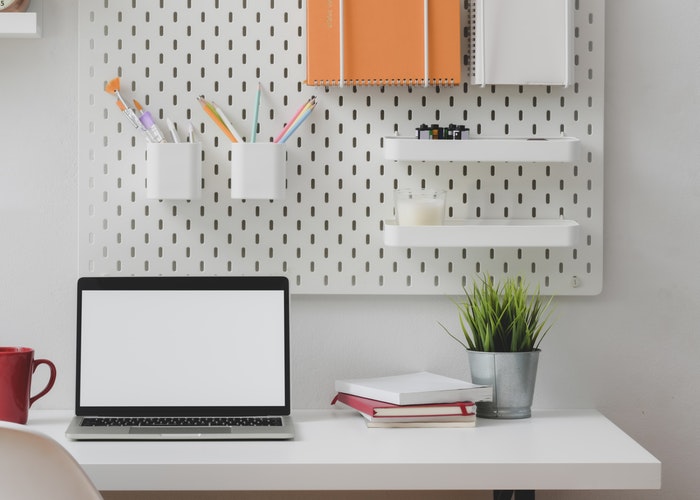How To Work From Home Without Losing Your Mind

Whether it’s because your entire office is taking precautions to prevent spreading COVID-19, or because you may have come in contact with someone who has it and have to stay in quarantine, suddenly working from home when you’ve gotten cozy in your workplace routine can be a serious challenge.
You may be stuck inside your house for days on end, unable to leave, while your work hours and home hours blur into one, indecipherable unit. This is your idea of purgatory. If you have anxiety about being stuck at home, don’t fret. Here are a few tips to help you stay on track and not go crazy in isolation.
Take frequent breaks.
If you live alone or live with people who work in an office, then working from home will likely present fewer distractions than your office usually does. With that said, the downfall of this is that if you’re too focused, you can often go long hours without taking a break, all simply because you forgot to. This is a recipe for burnout, especially for weeks on end. In fact, the American Psychological Association reports that “without firmer boundaries, employees can experience exhaustion and burnout” when working from home and striving to go above and beyond.
To prevent this, take short, frequent breaks to get up, walk around, and even grab a snack. If you have to, set an alarm every two hours as a reminder to relax for ten minutes. This will help you refocus, feel energized to get back to work, and avoid exhaustion.
Change the scenery whenever you can.
Of course, this works best if you work from a laptop at home, which can accompany you anywhere in your apartment—your couch, your bed, and even your bathroom if necessary (but let’s hope it doesn’t come to that). This works even better when you can leave the house and set up shop at a coffee shop or outside somewhere else. Staying in one spot, day in and day out, will definitely cause you to get a little stir crazy. Instead, get up every few hours to change your work spots so that you can give your productive brain a little refresh.
If you have a home desktop workstation that isn’t so easy to move around, try changing up your desk space every few days. Move a plant onto your desk, or rearrange some of the knick-knacks on your desk to give yourself something visually stimulating, and a sense of change.
Don’t get too comfortable in your leisure clothes.
I have to admit, when I work from home, it’s hard for me to get out of my pajamas and put on real-people clothing. If you don’t have any client-facing conference calls or have to show yourself to another person, frankly, why would you bother wearing something dressy?
As I’ve found out, it doesn’t take long for your first fun day of working from home in yoga pants and an oversized top to get too comfortable — comfortable to the point of there being no discernable difference between home and work. Even when you’re inside working from home all day, finding small things to separate your work life from your home life will make a huge difference, and even something as small as what you wear can help. This doesn’t mean you have to wear slacks and a button-down blouse while you’re at home, but don’t immediately resort to staying in your pajamas all day.
Stay in contact with your colleagues.
Finally, we’ve saved the most important takeaway about staying sane in isolation for last: communication. One of the great things about working in an office environment is how simple it is to communicate with your team. You can just tap them on the shoulder, and have a conversation about an upcoming project or task! At home, communication doesn’t come so naturally, and when your team stops connecting with you to broadcast important information, that’s how work ultimately gets delayed.
While team messaging apps such as Slack and Microsoft Teams help, sometimes verbal, face-to-face virtual communication helps the best. See if you can coordinate a daily or weekly call with your team to discuss what’s going on each morning. It doesn’t have to take too long but will help communicate what needs to get done and avoid the awkwardness of conveying tone in written words.
*****
When it’s all said and done, being able to work from home is a privilege for many of us that we shouldn’t take lightly. The most important thing during an outbreak is to practice social distancing and make sure we’re not putting anyone who is particularly vulnerable at risk.
We’ve seen time and time again that remote workers can be just as productive as in-office workers, but it does take some time getting used to the environment. Remember to take care of yourself, take breaks when needed, and stay in contact with your team.
Montana Cumming is a writer and content creator from Vancouver, BC. She enjoys cooking, writing, running, and recipe-testing to uncover the cheapest, tastiest, and most-nutritious plant-based recipes out there.
Image via Pexels
Like this story? Follow The Financial Diet on Facebook, Instagram, and Twitter for daily tips and inspiration, and sign up for our email newsletter here.

